Archives
Use Toilet Paper NOT Tissues
We are regularly asked to clear blocked toilets and drains that are often caused by products that are Not meant to flush down our toilets that drain to our sewer pipes.
This 1:17min YouTube clip gives a very simple demonstration on why you should only use toilet paper.
Sanitary Napkins, Tampons, Condoms, Baby Wipes, Flushable Wipes, Cotton Buds? The answer is NO!
We recommend and supply Who Gives a Crap if you need Toilet Paper.

Because we do! 🙂
If you have a blocked drain, I know a guy!
Do deciduous tree roots block drains in winter?
Following on from our previous post, Do tree roots grow in sewer pipes during winter, deciduous trees that shed their leaves during the autumn, generally follow a similar pattern in terms of root growth during winter. However, there are a few additional factors to consider.
Deciduous trees undergo physiological changes in preparation for winter. As the days shorten and temperatures drop, they enter a period of dormancy. During this dormancy phase, metabolic activity slows down, including root growth. Deciduous trees allocate their energy resources towards survival mechanisms and protecting themselves from the cold rather than active growth.
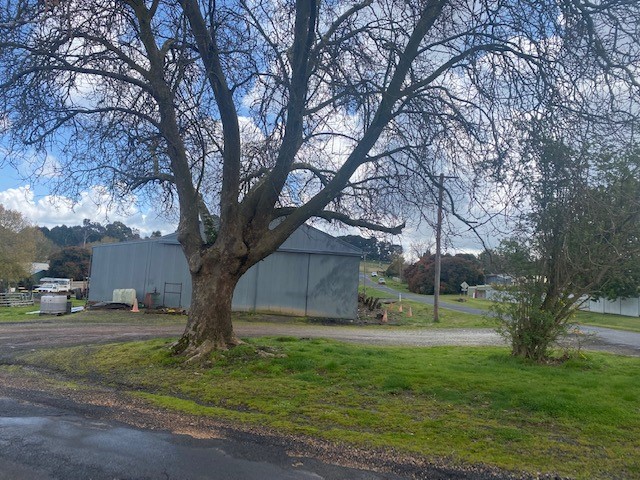
One significant difference with deciduous trees is that they shed their leaves in the autumn. This leaf drop allows the tree to conserve water and energy during winter when resources are limited. Without leaves, the tree doesn’t require as much water and nutrients, reducing the demand on the roots during the dormant period.
While root growth is generally slower or dormant during winter for deciduous trees, some root activity may still occur. Roots continue to function for basic water and nutrient uptake, albeit at a reduced rate compared to the active growing season. According to the arborists I’ve spoken with, the majority of root growth for deciduous trees resumes in the spring, coinciding with the growth of new leaves and the tree’s transition out of dormancy.
So, while there may be slight variations due to leaf drop and dormancy, the overall pattern of reduced root growth during winter applies to both deciduous and evergreen trees.
But remember, tree roots from deciduous trees will still block your drains and if they do, we can help!
What happens when tree roots grow in sewer pipes #2
The growth of tree roots in sewer pipes is probably the most destructive single element that faces those maintaining a sewer collection system today. 
Sewers are ageing expensive assets that only attract public attention when they fail. There are over 35,000 kms of water and sewer pipes in Sydney and 60% of all collection systems are made up of pipes with a diameter of 9 inches (225 mm) or smaller. The potential for tree root intrusion to inhibit flows, produce blocked drains and damage valuable pipes, is enormous.
Tree roots normally do not grow underwater and seldom cause problems where ground water covers the pipe. But in most areas, this is not the case.
Tree Roots Grow One Cell at a Time
When a seed germinates, it adds one cell at a time toward the best environment from which it might extract nutrients and moisture. The growing point of a tree moves best through loosely cultivated soil.
The most common practice used to lay sewer pipes is in an open trench. The back-filled soil offers a good growing medium for tree roots. Because the flow in sewer pipes is a higher temperature than the soil, this causes a condensation to appear on the crown of the pipe.
As the warm moisture from the sewer pipe evaporates up through the soil, the vapours offer an excellent trail for the tree roots to follow. If a vapour leak exists in the pipe, the roots concentrate its efforts at that point. Since some pipe joint compounds are of nutrient based material themselves (like rubber rings or sand cement mix), the root may entirely girdle before entering the pipe.
Roots Allow Accumulation of Debris
Once inside the sewer pipe, the root takes on the appearance of a “veil” or “horse tail” type structure. If flows in the pipes are fairly constant, the root mass hangs down like a veil to the normal flow level where they accumulate deposits of grease, slime and other debris.
Conventional methods of removing tree roots by cutting with an electric eel or a “Rattlesnake” high pressure water drain cleaner tend to increase regrowth; similar to pruning a tree. Removing tree roots inside the pipe solves the immediate problem of clearing the blocked drain, but does nothing to retard the tree root regrowth or destroy the tree roots outside the pipe.
This removal, regrowth and removal cycle of cutting and tearing roots can destroy the structural integrity of the pipe.
Herbicide Fumigants
Herbicide fumigants present the most effective method to destroy tree roots and inhibit their regrowth without affecting the above ground plant life. Vaporooter is a root control herbicide that enters the sewer as a foam. Only tree roots within the pipe and a short distance outside the pipe are affected. Trees and shrubs immediately above ground are not harmed in any way.
Raw sewer overflows to Coogee Beach.
During the Stay at Home orders we’ve been doing emergency plumbing repairs like hot water, leaking pipes and Blocked drains.
The blocked drain that got my interest is the one taking the waste from 28 houses on Raleigh Street and Carrington Road, Coogee.
The filthy waste water has been bubbling up through the ground about 50 metres down the hill from the houses and running across the footpath in front of other homes not connected to the service, into the street gutters that drain into the creek at the north end of Coogee beach for most of July.
Apparently the 28 home owners are unaffected by the blockage because it’s not in their backyard and a Sydney Morning Herald article reports Sydney Water and Randwick City council cannot force the home owners to pay for any repairs.
It’s well known that every home owner is responsible for the maintenance of their waste water pipes up to where they join the Sydney Water sewer main out in Carrington Road.
This pipeline is known as a common sewer and the costs for any maintenance should be shared equally between all those home owners connected to it.
Come on Randwick Council, Stop this river of sewage running down to Coogee Beach!
Get a contractor to fix the problem and split the costs among the 28 property and home owners.
Click here to read our earlier post on Common Sewer lines.
Woollahra Council trees are blocking my drains
Many of the blocked drains we attend to are caused by the trees that line the streets managed by Woollahra Council.
At street level, the trees’ canopy brings summer shade and all kinds of birdlife.
Contrary to belief, tree roots don’t go in search of water. They are stimulated as moisture levels, and the surrounding soil temperature reaches a point that is appealing to them.
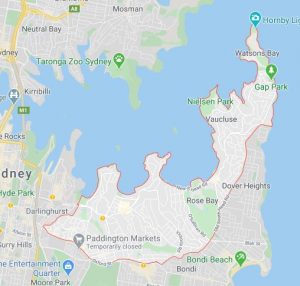
Sydney suburbs managed by Woollahra Council: Bellevue Hill, Darling Point, Double Bay, Edgecliff, Paddington, Point Piper, Rose Bay, Vaucluse
In most circumstances, the tree roots enter through leaking pipe joints and damage the sewer drains and stormwater pipes that take wastewater off your property. Many homeowners hold Woollahra Council responsible for their blockage and expect they will clear their blocked drains for free because the Council own the trees.
Well, in some cases they do!
But, Woollahra Council gets their income from you the ratepayer, and as you would expect, they have guidelines for spending ratepayers money to fix your blocked drains.
If you live in one of the suburbs managed by Woollahra Council, click here to see the Woollahra Council Wastewater Policy.
The top points are that you the homeowner:
Must have a sewer service diagram for your home.
Must maintain your sewer pipes.
Must prevent sewer blockages.
Must prevent sewerage from escaping into the environment.
May be entitled to the Council plumber clearing your blocked drain.
Tree roots don’t know about Coronavirus
Sydney April 14th 2020
Easter is over for another year.
Although our towns are slowing because of the Coronavirus, and we are quickly changing our daily home and work habits, here at The Lone Drainer and Pronto, we are still working away.
Working from home is putting our normal facilities under a little more pressure. That means the internet, the exercise areas and our bathrooms.
With all that extra baking and comfort meals, our sewers are under a more significant workload. Tree roots don’t know about Coronavirus, and still seek food and water in the sewer pipes they can grow into.
So, if you hear your drains gurgling don’t ignore them. They are asking for help.

Dormant, but active underground
Who is responsible for my sewer pipes?
Did you know homeowners are responsible for their sewer pipes up to and including where they meet the Sydney Water sewer mains?
A lot of people are shocked when they find that out.
If you need to renew your sewer pipe line because it has been damaged by tree roots and the pipes run out in the middle the road, then, the homeowner is responsible for all the costs of the renewal, including Council road opening fees.

How do tree roots get into pipes?
Tree roots grow through trenches dug for plumbing pipes.
When plumbers excavate a trench in virgin soil to lay our pipelines to take the waste water from your home, we till the soil.
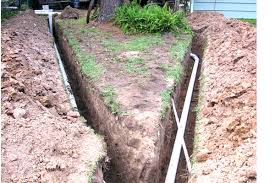
The simple method of excavating the soil with a shovel or even a mechanical excavator like a backhoe actually breaks up the soil.
See the tree in our attached pic?
Its root system will be able to grow through the trench looking for weakness in the pipe line.
After we complete our excavations and lay the pipes in the trenches, we back fill the trench, putting the excavated soils back.
Sometimes we water in the soil and quite often use a compactor to help with the back fill process.
Excavations are often back filled with an aggregate like blue metal gravel.
The back filled trench is never as compact as the virgin soil. It provides the roots of nearby trees a much easier path to “wander” along in their search for water and nutrients.
Why you should look inside your pipes
You’ve got a blocked drain and your plumber puts a camera in the drain to see whats going on down there!
What happens after that?
Plenty of homeowners don’t get to see the footage their plumber has taken of the inside of their pipes. For some reason, the plumber chooses to keep what is going on in your pipes a secret from you.
Why?
Like any medical scan or x-ray of your body, it shouldn’t be kept a secret from you.
You should be able to see what’s going on in your drains so you can get a greater understanding of how the drains work. Or don’t!
Then, you can make an informed decision about how to repair your pipes and get other professional opinions on how to do that.
There are many ways to maintain your pipes and drains.
So if your plumber recommends a particular method of pipe repair after he puts a camera in your drains then tells you what he saw… but doesn’t show you, ask him for a copy of the pipe survey.
After all, he has billed you for it.
This survey shows a section of re-lined pipe with earthenware pipes and tree roots.
Home Buyers Beware of non-compliant plumbing
Home buyers beware.
For us, the heat in the real estate market is reflected in the lack of due diligence by potential home buyers prior to purchasing properties in our suburban real estate grab.
Yesterday we helped a young couple who just bought their first home in the Ryde district.

They had bought a house that had the bathroom toilet illegally connected to the surcharge gully which was outside the bathroom and near their front door. The gully had a deck built over the top of it to make the front of the house more appealing.
Every time the toilet was flushed the discharge spilled into the gully underneath the deck. Yuk!
After living in the house for only three weeks they started to question the blocked drain symptoms displayed by the toilet. There was also some consternation about the sewerage smell at the front door.
Apparently the young owners had undertaken a pre-purchase building inspection. Somehow the building inspector did not pick up this illegal plumbing connection.
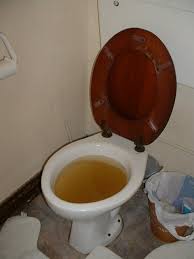
The only advice I can give you is, if you have a friend that’s a plumber don’t get him to look at the property before purchase.
Instead, get a plumber who has plenty of experience in looking at domestic homes, who has an eye for the unusual and is prepared to look a little harder than just scratching the surface.
Any rectification work to the problem we have just uncovered will be expensive. In the $3000-$5000 range.
That is not what these new eager homeowners were expecting.
5% of blocked drains are fixed with an electric eel
Less than 5% of blocked drains in Sydney are cleared by an electric eel. The rest are cleared and cleaned by high-pressure water drain cleaners that operate by pumping clean water at very high pressure into the sewer pipe through a series of hoses to clear the blockage.
Over 85% of blocked drains are caused by tree roots and we can show you how to Stop Tree Roots in Drains. Watch this short 2 minute YouTube video to see how we use the “Rattlesnake” drain cleaner to clear your blockage!
Blocked Pipes and Council Trees
Did you know many blocked sewers are caused by the tree roots from Council street trees?
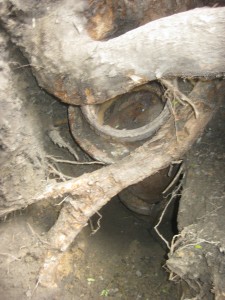 This issue is becoming a very big drain on the budget of many local councils.
This issue is becoming a very big drain on the budget of many local councils.
The council owned trees that make some of our more sought after suburban streets very special, are creating havoc underground by repeatedly blocking the sewer pipelines from many of the homes on those streets. Councils are fighting a losing battle trying to bring the tree roots under control.
The budgets of many local councils are strained as they just can’t keep up with the demand of their ratepayers to attend to sewer blockages caused by these street trees.
There is an economical way for local councils to Stop Tree Roots in Pipes and ease the burden on the budget and the ratepayers who have regular tree root blockages.
Vaporooter Kills Roots. Period!
Happy Plumbers + Great Service = Happy Clients
We have a great team of plumbers here at The Lone Drainer and Pronto! They are good at their job. They Love their work. We call it “Furk”! Having FUn..at..woRK
On Monday afternoon, 27th October 2014, I got the following email:
Hi Dave,
Thank you so very much for taking my phone call early this morning and organising Chris and Leigh to come to my house so quickly.
Chris and Leigh arrived, knocked on my door, introduced themselves with smiles and put me at ease that my sewerage problems would be fixed.
Such a relief. I could not have had nicer people to arrive on my door step. Both well mannered and very pleasant people to talk to.
I also had a problem with my kitchen sink tap. Unfortunately I had to leave Chris at the kitchen sink as I had to go to work. He did a good job and I now have a brand new tap looking at me! Both men were very efficient.
Again, thank you for being so prompt and getting the job on its way.
Kind regards,
Julie B. Randwick NSW

Leigh and Chris with Plunger
My Plumber is a Wizard
Sometimes its great to laugh at ourselves.
I’ve always loved the Wizard and this is a good one!

Flush with Facts
August is the month of the good toilet flush!
Flowing sewer drains, my favourite topic in the whole wide world, is Not what I mean dear readers!
I’m talking about the toilet and the cistern; the little tank of water that flushes our loo.
So here’s 3 Flush Facts:
1. The toilet flush button is the most un-hygienic place in your bathroom.
2. A full toilet flush is more water than most people in the world use daily.
3. A leaking toilet cistern can waste up to 24 litres of water daily. That’s a whopping 2160 litres of wasted water in your quarterly water rates. And that’s from just 1 toilet cistern.
So, next time you are sitting and thinking………. Think about that!

Common pipelines; easements, ownership and liability #3

One recurring topic of 2023 is the Ownership and liability of common water, sewer and gas pipes.
When we send out an emergency response team to a ruptured gas or water pipeline or an overflowing sewer, the first thing our team thinks about is rescuing the property under threat.
Often, it is after the emergency, that ownership and liability of the problem are hotly debated.
This series of 3 blog posts is aimed at clarifying some of that debate and to read #1 click here and to read #2 click here
Our friends at the Law Reform Commission have helped to clarify this interesting subject and in part it says:
LIABILITY FOR COSTS
Role of the Water Board
An important and related issue that was raised in DP 22, in respect of utility services, is establishing liability for the repair and maintenance costs of common service pipes for individual users. The problem only really exists in respect of joint sewer services, because the Water Board will absorb the costs of repair and maintenance of water services (joint or single) within the areas of its operation. In those cases where the Board does not assume responsibility, it can still do the repair work itself and then issue notices for payment to the users of the service. The Water Board Act 1987 (NSW) does not contain any guidelines in respect of apportioning the costs of the work carried out.
The Water Board does not assume the same level of responsibility in respect of sewage services. A liability policy similar to the water supply policy (as discussed above) was considered for sewage services, but was rejected as too expensive. Where the Water Board is aware that work needs to be done on a joint sewer service, the Board will issue a defect notice requiring the users to repair the service within a certain period of time. Sometimes repair is ordered to take place within 24 hours, if the damaged service is deemed to be a health risk. It may also be the case that the users of that service realise that the service is in need of repair and attend to the repairs prior to receiving a notice from the Board.
Existing guidelines for apportioning costs
There are no guidelines to assist the owners in dividing the cost of repairs, although DP 22 argued that Regulation 9 of the Plumbing and Drainage Regulation (September 1989) could be interpreted as making owners jointly responsible for the maintenance of their water service pipe, sewer or storm water drain.8 Some users may argue that they were not responsible for any damage to the service and thus refuse to pay anything; other users may argue that the cost of repair should be divided equally, regardless of which users were directly affected, on the basis that the service is jointly owned; and others may consider the amount charged to be excessive and only wish to pay an amount they consider appropriate. Although a recommended rate may be obtained from the Master Plumbers Association, this rate is not a standard or enforceable rate and the final figure charged may be higher or lower depending on the circumstances.
In practice, one user (usually the person most affected by overflow from the blockage) often pays for the repairs and is then forced to seek contribution from the other users, and when payment is not forthcoming, he or she may be forced to litigate for the recovery of the money. Whilst a user may wish to claim equally against each of the other users of the service, it is difficult to prove what their contribution should be. A plumber may be retained to give expert advice about who or what caused the damage to the service. This lack of legislative direction stands in sharp contrast to the specific contributions that unit owners of a Strata Titles plan are required to provide by way of levy where maintenance and repair of the common property is necessary.
A plumbing emergency and ducks we’ve rescued
We were called out to this plumbing emergency that brought an unexpected surprise.
Our client had a blocked drain and when we had just about completed that repair, cutting tree roots from her sewer pipes, she called out because she needed a hand in her back yard.
A mother duck that had been nesting in her dense rear garden had chosen today to take her babies for their first swimming lesson. The ducklings took to the water like ….. well, ducks to water. The only problem was that the water level in the pool was a little low, they couldn’t get out of the pool and they were getting very tired.
Our attempts to rescue them by hand and with the pool scoop, brought a tirade of squawking and flapping of wings from the mother duck. She didn’t want us anywhere near her babies! We found a plank in the back shed which we put in the pool and then draped an old towel along the length of the plank, then stood back.
When mother duck settled down she could see we were trying to help, she led the baby ducklings up the plank and after checking they were all out, she herded them back to the nest in the dense undergrowth.
She gave us another flurry of feathers when we tried to check on the babies.
Every day brings another adventure!

Common pipelines; easements, ownership and liability #2

One recurring topic of 2010 is the Ownership and liability of common water, sewer and gas pipes.
When we send out an emergency response team to a ruptured gas or water pipeline or an overflowing sewer, the first thing our team thinks about is rescuing the property under threat. Often, it is after the emergency that ownership and liability of the problem are hotly debated.
This series of 3 blog posts is aimed at clarifying some of that debate.
Our friends at the Law Reform Commission have helped to clarify this interesting subject and in part it reads:
A user of a service may attempt to disconnect the joint service and force other users of the service to bear the cost of a direct connection to the main service. Such action will however, be illegal unless conducted in accordance with the Water Board Act 1987 (Water Board (Plumbing and Drainage ) Regulation 1989),2 or a court order declaring that the common user of the service has a right to discontinue the service.
The creation of permanent rights of access is seen as a means of avoiding problems of access in respect of utility services, and applications have been made to the courts over the years to have access to and over utilities such as water pipes and sewers recognised as easements of necessity. The courts have, however, gone to considerable lengths to hold that although such an easement may be considered by a landowner to be essential for the reasonable enjoyment of property, it is not an easement of necessity, because at law, easements over such services are not considered necessary to the land itself.
Although DP 22 raised the possibility of statutory recognition of these “trespassing” services as a means of rectifying the problem, the Board of Surveyors pointed out in their submission that few authorities know with any exactitude the location of their service lines. Consequently, the Board of Surveyors opposes the creation of statutory easements over them until such time as they are properly defined on title. The Commission agrees that such a step may be expensive and premature at this stage. It would seem desirable however, that steps are taken in the long term by the relevant authorities to locate such services, properly record them and establish the appropriate rights over them.
Don’t play Noughts and Crosses when you have sewer problems
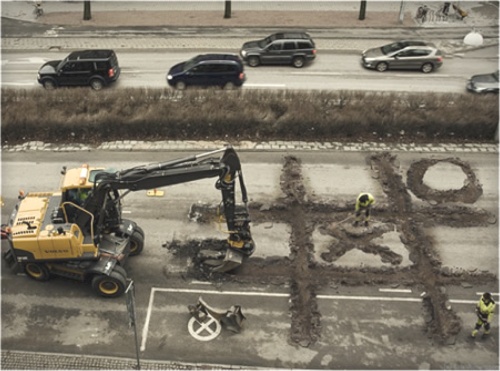
Today’s post comes courtesy of Dr Marc Dussault, The Exponential Growth Strategist. At his recent Exponential Business Building Bootcamp, he showed a series of “impossible pictures” from Swedish Artist Erik Johansson. This photo was of particular interest. This is what we want to avoid with the use of Vaporooter when tree roots get into and block your pipes and drains.
Common pipelines; easements, ownership and liability #1

One recurring topic of 2010 is the Ownership and liability of common water, sewer and gas pipes.
When we send out an emergency response team to a ruptured gas or water pipeline or an overflowing sewer, the first thing our team thinks about is rescuing the property under threat. Often, it is after the emergency that ownership and liability of the problem are hotly debated.
This series of 3 blog posts is aimed at clarifying some of that debate.
Our friends at the Law Reform Commission have helped to clarify this interesting subject and in part it reads:
In most cases, persons using utility services that pass through several properties benefit by the existence of an easement of access over that service, entitling the user to enter the property on which the service is located in order to attend to the service. However, in the absence of such an easement, the user of the service is not allowed to interfere with the service, even where that interference is for the purpose of maintenance, repair, or relocation of the service.
One explanation of why there may not be an easement is that the properties through which the service runs were once commonly owned. When the common ownership ceased, new owners may have failed to ensure that easements over water pipes or sewer lines existed for the particular part of the property they were purchasing. The problem may have arisen due to an assumption that such a right was simply transferred with the purchased property, or by an omission on the part of the conveyancer. Whatever the reason, the failure to create and register an easement has given rise to a number of lasting problems. These difficulties have been compounded by the general reluctance of the Water Board to impose on new purchasers a requirement to install costly separate connections. Many properties today do not have a viable means of creating a separate connection at reasonable cost.
Finely tuned athletes create blocked drains!
The 19th Commonwealth Games in New Delhi India have made headlines for several reasons.
Firstly, the Australian athletes have done exceptionally well. I have personally enjoyed the efforts of swimming legend Geoff Huegill on the comeback trail after a long break from the discipline of training. Huegill, the man they call Skippy, swam the best race of his life in the 100m butterfly final. His time, 51.69 sec, was easily the fastest he has ever swum and astonishingly places him, at 31, second in the world this year behind the greatest swimmer of all time, American great Michael Phelps.
A problem with blocked drains in the athletes village was blamed on an abundance of used condoms blocking up the sewer pipes. Indian newspapers reported the blockages; organisers are denying it saying “there was no blockage in the drains in the village and no emergency plumbers were called in.”
But one fact remains, the supply of complimentary condoms has been depleted by 4,000. So either there have been a lot of water fights, or groups of young athletes at their physical and hormonal peak have been “getting to know one another”.
I know which one my money is on!
It was during the 1992 Barcelona Olympic games that condoms were first purposefully handed out to athletes, and organisers have continued to do so ever since.
Whether you are in New Delhi, Double Bay, or Mosman, we don’t recommend disposing of condoms by flushing them down the loo into the sewer pipes.
But if it does happen, it sounds like a job for The Lone Drainer and Pronto!
Sydney Water fights tree roots in sewer pipes
Sydney Water, the guardians of our main sewer pipes, are constantly waging war against tree roots in our main sewer lines!
Many clients from Double Bay, Rushcutters Bay, Edgecliff, Woollahra, Paddington, Rose Bay, Point Piper and Darling Point, residents with lots of trees and tree roots growing in the sewer pipes around their homes, report Sydney Water are systematically surveying the mains around their neighbourhood.
If you have a tree root problem on the branch to the sewer pipes for your home, they will advise you.
To cut tree roots from your sewer pipes before it becomes a plumbing emergency follow their advice.
To keep the tree roots out of your sewer pipes you should seriously consider using Vaporooter.
Prevention will reduce blocked drains.
Today it was a pleasure to meet “Dr Elliot”… This man is incredibly organised.
We were called to his home to run our drain cleaning equipment, the world-famous “Rattlesnake” high-pressure water drain cleaner, through his house drains, downstream to the sewer boundary trap at the rear of his property, adjacent to the swimming pool.
He has had blocked drains in the past and declared he didn’t want the inconvenience of a blocked sewer pipe during the upcoming holidays when his extended family would be visiting and his old sewer line would be put under pressure.
The thought of having his beautifully manicured garden dug up or even disturbed, inspired this house proud professional to maintain one of his homes main arteries – the plumbing.
He compared our house visit to check his blocked drains to a patient having a health check with their Doctor, especially as we get a little older. Pipes and people!
Dr Elliott knew where all the access points to his drains were located, how to test his sewer and all the symptoms of a blocked drain. It was a pleasure to work with such a professional.
An ounce of prevention will keep your drains running. Oh, and if pain persists, see your Doctor.
Carrying Out a CCTV Survey of Sewer Pipes
The Importance of Carrying Out a CCTV Survey of Sewer Pipes when Clearing Blocked Drains
Once again there is water all over the floor from a blocked drain, and you need to grab the phone book and look up plumbing services Sydney to find plumbers that can come out and unblock the drain. You can save yourself repeated repairs and repeated calls for service by simply having a plumbing service carry out a CCTV survey of sewer pipes, so that when there is a problem it will be easy to clear the blocked drain. The CCTV survey can tell you what caused the initial drain blockage.
There are many reasons a drain would get blocked, and having a map of where all the pipes are is going to save you a lot of money in the long run.
Tree roots, industrial waste, and cracked or broken pipes are all reasons the drain might be blocked. The problems that come with blocked drains are foul smells and potential health risks. Call a professional plumbing service to make sure that your plumbing is not going to cause you discomfort in your home or business and end up costing you many times more than it needs to.
It is said that prevention is the best cure and by having a CCTV scan and mapping of your sewer system just got a lot easier with help from professional plumbing services. The scan will clearly show small objects, hair blockages, and any other refuse that is stuck in the drain. The scan maps the sewer lines so that you can track where a problems lies.
Plumbing services that are practised in using the CCTV scans can quickly and easily solve your blockage problems. The clear detail shown with this method will save money right from the start. Instead of having to tear up half of your garden and part of your paved drive, the scan shows exactly where the work needs to be done. Plumbing services have stepped up to the plate to carry out the scans and correct any problems the home owner or business owner may encounter in their plumbing.
By using the opportunity of a blocked drain to get a CCTV scan done, you will be able to better maintain the sewer; now that you know where all the pipes run that is.
Renovation is another time you may want to use the services of a professional plumbing service. The map will give you a clear understanding of where you can and cannot build.
Call on the plumbing services of certified plumbers to address and correct the problems with your system and to maintain them as needed. The CCTV scan saves time and money that would be laid out for labour. Understanding how the pipes run in and around your house will enable you to dig anywhere on your property. Be careful, and be sure to call in a team of professionals that take care of everything from doing the scan to fixing whatever problem you may be having with your plumbing.
Toilet Paper or Bidet?
The Harsh Reality of Using Toilet Paper Rather Than Washing with a Bidet
Having travelled Europe extensively, one gets used to a bidet. Coming back to Australia made some of the queried group bemoan the loss of the bidets they got so used to. The question as to whether or not it was environmentally responsible to throw tissue paper in the toilet or in the trash was raised.
The questioner remarked that they were bothered by how much tissue paper is used by a single family and they wondered just what it takes to remove the paper from sewage lines and from the treatment plants. Some experts were asked this question and they came up with answers to those questions and wonderings. Of course, all the experts came from the plumbing services fields and would know best how to deal with this problem; they gave opinions on what they felt were the best options. We also inquired at several plumbing services and a couple of places that offered a professional plumber.
When attached to a sewer line that is maintained and repaired by a city, the toilet paper is decomposed through the processing system. In order to break down any solid matter that is in the waste water, methane is used. Ways to harness this methane gas is being researched and tested to make this process more efficient. Toilet paper blockages in the sewer lines don’t happen often, but consider the fact that the blockages would be reduced if a bidet were used.
Cleaning one’s self with toilet paper in a home that is hooked to a septic tank can cause all sorts of nasty things to happen inside your house when blockages happen. Plumbing services have to be called in to remove the offending paper, and then any crack in the pipe or seam that is a little rough can gather another huge wad of toilet paper and clog everything up again. This is good news for the plumber; they appreciate the business, but for the home owner, this is a costly repair.
Bidets would do away with the need for toilet paper and end the numerous blockages that are created when someone shoves a huge wad of paper down the toilet.
If you are really lamenting the loss of the bidet, call in the plumbing services and get your bidet installed. Almost any plumber will be more than happy to install a bidet for your home. With a bidet of your own, you will reduce the amount of paper that is used, reducing the amount of trees used in the process.
Giving up the toilet paper is much more sanitary than giving up the bidet. The bidet allows for a cleaner person while not using as many resources.
In the end it was decided that the bidet is the best way to go environmentally, for the best sanitation and for low repair bills.
